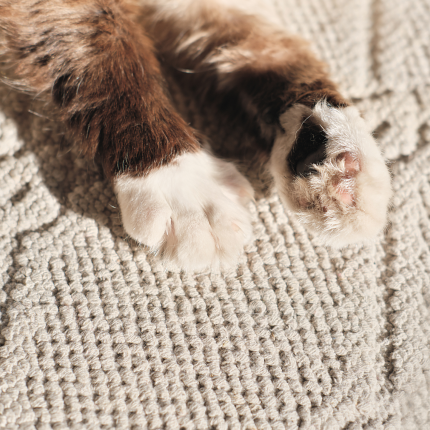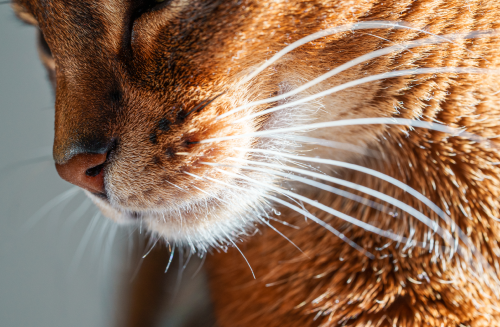Cat Leg Whiskers: AKA Carpal Whiskers

Whiskers on cats are adorable, but few people know that they serve a purpose far more significant than aesthetics.
Whiskers may look like fur, but they are sensory organs that play an essential role in how cats interact with their environments. You’ve probably noticed that cats have whiskers on their face and eyebrows. In addition, cats have carpal whiskers located on their front legs that provide vital information about the objects in their grasp and are very important when hunting.
advertisement
 What is the purpose of whiskers?
What is the purpose of whiskers?
Consider that cats must be able to hunt and defend themselves even at night or in dark places. Even if they can’t see, cats must still be able to move and hunt, and their whiskers provide them with the necessary information. Sensory organs like whiskers act like a cat’s GPS or radar.
Even cats with long coats have whiskers that are much longer than their fur. However, their length isn’t random. A cat’s whiskers cover a distance almost equal to its body’s width on both sides of its mouth.
When hunting, cats must be able to move quickly. To accomplish this, they need to be able to make quick decisions regarding their location and their actions.
As a rule, a cat can fit in any space as wide as the length of its whiskers. This is because their whiskers allow them to determine if an area is too small for them quickly, preventing them from getting stuck.
advertisement
What Is the Purpose of Cat’s Leg Whiskers?
Some people call leg whiskers ‘cat elbow whiskers’ because they are located on the underside of the cat’s wrist area. They provide information about objects within the cat’s grasp, such as prey.
Cats use their forelegs to hold their prey when they catch it. Cats cannot see very close objects in great detail; they have their leg whiskers. Cats’ whiskers contain a robust nervous system that transmits information to their brains.
When a cat holds its prey, the leg whiskers can provide very detailed information about the prey’s position and movement. As a result, it helps the cat react very quickly to the direction of its target, which allows it to be a better hunter.
While its forelegs are specialized in grasping prey, its hind legs are specialized in another part of hunting, killing, and disemboweling prey. Based on information from the carpal whiskers about the position of the quarry it is grabbing, its hind legs can kick and scratch at its prey’s belly area.
![]() Cat owners are very familiar with this type of movement of the hind legs, also referred to as pumping. To immobilize the prey, they use their forelegs, while their hind legs are used to pump and pump.
Cat owners are very familiar with this type of movement of the hind legs, also referred to as pumping. To immobilize the prey, they use their forelegs, while their hind legs are used to pump and pump.
Perhaps you have seen your pet cat do this with toys, pillows, or even your arm. The cat’s hunting abilities give rise to this type of behavior we call playing. While it may look cute, remember this is your cat ripping its pretend meal to shreds.

Featured Articles

Greebles and Cats: The Origin and the Meaning
You may have seen an internet sensation concerning cats labeled “greebles.” Feel out of the loop? We’re here to help you. In 2019, Reddit user /user/literallyatree commented on a Reddit post about a cat that looks like it’s trying to slap a ghost. This user commented: “My family calls things…

Why Do Cats Roll Over Into Their Backs But Not Let You Touch Their Bellies?
It’s common knowledge dogs love to have their tummies rubbed when they freely lay down before you and roll onto their backs. But, if you’re also familiar with cats, you know that when they roll onto their backs with their bellies exposed, rubbing the belly will most likely result in…

Polydactyl Cats: Just More Beans to Love
Polydactyl cats have become extremely popular in recent times. As a result, more and more people are interested in learning more about this six-toed cat and want to get one of their own. If you are a cat lover intrigued by polydactyl cats, you have come to the right place….